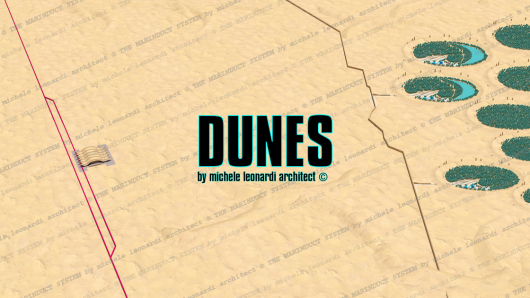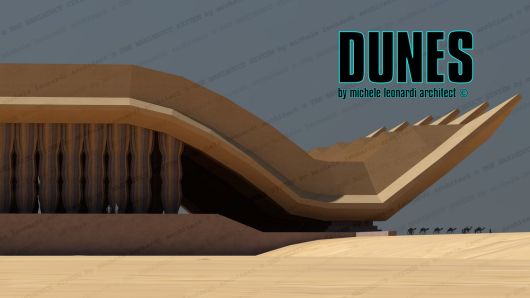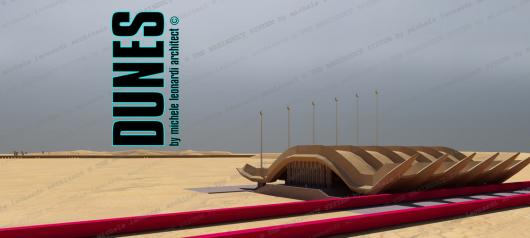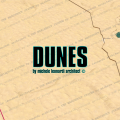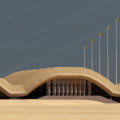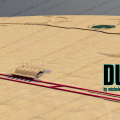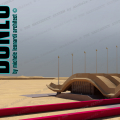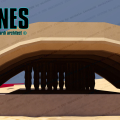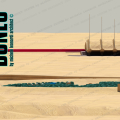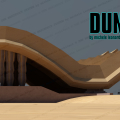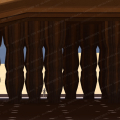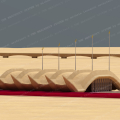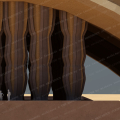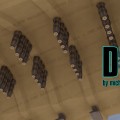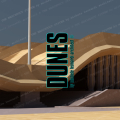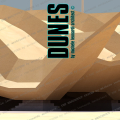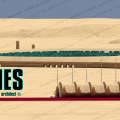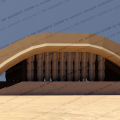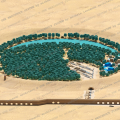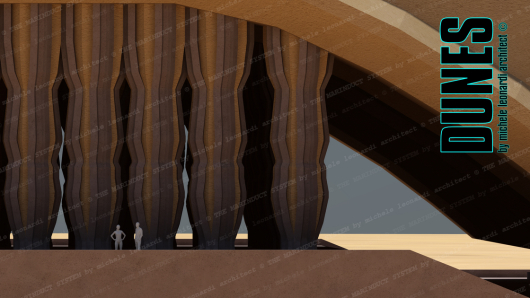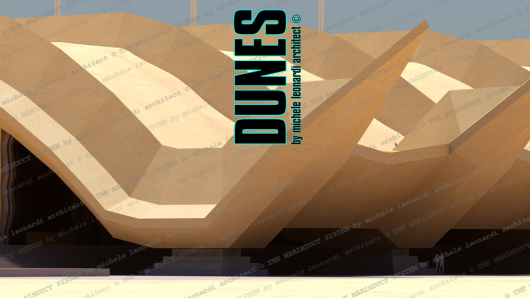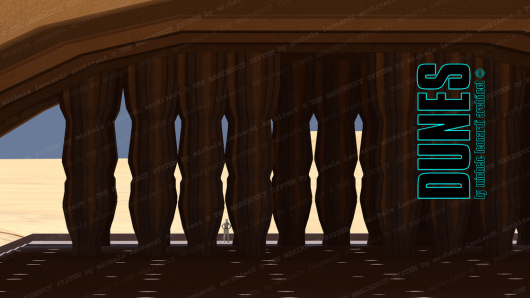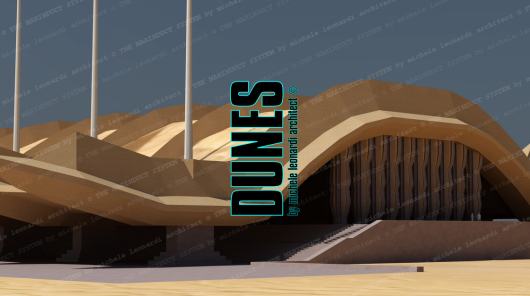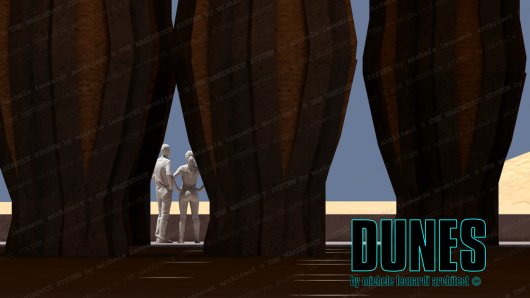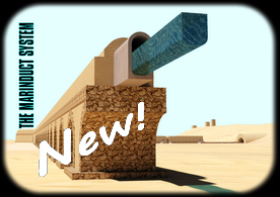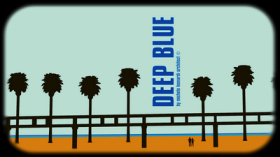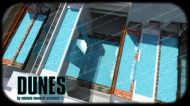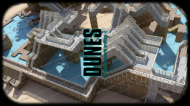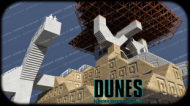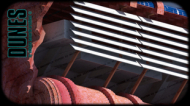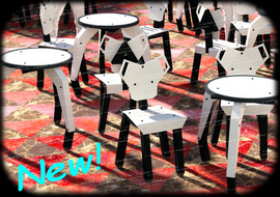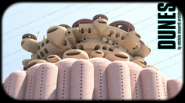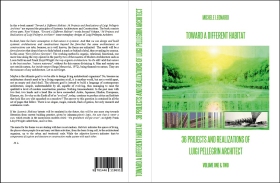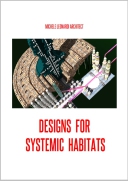الكثبان
D U N E S
THE MONUMENTAL RAILWAY STATION AND MARKET:
THE ARRIVAL IN THE ENDLESS DESERTIC SPACES
by Michele Leonardi architect © August 2019
THE MARINDUCT
AND DUNES: WHY?
Why are we involved in new habitats, in new settlements in the desert?
For all the reasons given in the Marinduct introduction.
AT FIRST
monumental stations like this one illustrated here, will be a rarity and an exception that confirms the rule in the "Marinduct System".
The rule will be given by "open air" railway stations, consisting only of a parallel parking track with respective exchanges, manuals. The driver stops the train (passengers and / or freight), then another man gets out and moves the exchange. The same railway stations will be a rarity and will not be electrified. This at least in principle and according to the progressive development of the whole system.
So a market-station and "portal in the desert", like the one proposed here, would make sense only for special places, for example as the entrance to an area of the desert declared from scratch a natural reserve, and the large aggregates of new artificial oases placed outside its borders.
In fact it will also be necessary to envisage new protected natural areas simultaneously with the progressive development of the Marinduc System with its new artificial Oasis.
Monumental architecture also has its function: to reveal the nature of a place, his "genius loci", and to create new worlds.
WE MUST
respect the desert.
The desert is nature, it is alive, it is a sacred place. As showned in the drawings of "The Marinduct Oasis System": no cars always in the way.
Then no asphalt and roads, because the stench of civilization (or rather, incivility) must never reach the desert. Artificial lighting only inside the new artificial oases. The only means of transport allowed in the new habitat of artificial oases will be: feet, camels and trains, the latter for the great essential movements of goods and people.
In other words, the new oases will not be a new colonization system followed by the construction of the usual dystopian new cities.
POURQUOI
LE MARINDUCT
ET DUNES?
Pourquoi on nous occupe de nouveaux habitats, c'est-à-dire de nouveaux établissements, on espère innovatifs, dans le désert?
Pour toutes les raisons indiquées dans l'introduction au Marinduct.
AU DEBUT
les stations monumentales comme celle illustrée ici, seront une rareté et une exception confirmant la règle dans le contexte du "Systéme Marinduct".
La règle sera donnée par des gares "à ciel ouvert", composées uniquement que d'une piste de stationnement parallèle à la ligne principale, avec ses respectifs aiguillages, mais manuels. Le conducteur arrête le convoi (train de voyageurs et/ou de marchandises), un autre homme sort et déplace l'aiguillage. Les mêmes gares ferroviaires seront une rareté et ne seront pas électrifiées. Ceci au moins au principe et en fonction du développement progressif de l'ensemble du système.
Ainsi, une station de marché et un "portail dans le désert", comme celui proposé ici, n’auront de sens que pour des lieux particuliers, par exemple comme l’entrée d’une zone du désert déclarée ex novo réserve naturelle, avec de grands ensembles de nouvelles oasis artificielles placées en dehors de ses frontières.
En fait il faudra aussi envisager de nouvelles zones naturelles protégées simultanément au développement progressif du système de Marinduc avec ses nouvelles Oasis artificielles.
Il faut souvenir que aussi l'architecture monumentale a sa fonction: révéler la nature d'un lieu, son "genius loci", et créer de nouveaux mondes.
IL FAUT
respecter le désert.
Le désert c'est de la nature, c'est du vivant, c'est un lieu sacré. Comme indiqué dans les dessins du projet "The Marinduct Oasis System", pas de voitures toujours sur les parages.
Donc pas d'asphalte et pas de routes, parce que la puanteur de la civilisation (ou plutôt, de l'incivilité) ne devra jamais atteindre le désert. Éclairage artificiel uniquement à l'intérieur des nouvelles oasis artificielles. Les seuls moyens de transport autorisés dans le nouvel habitat des oasis artificielles seront: les pieds à soi, les chameaux et les trains, ces derniers utilisés pour les grands mouvements essentiels de marchandises et de personnes.
C'est-à-dire que les nouvelles oasis ne seront pas un nouveau système de colonisation suivi par la réalisation des habituelles villes nouvelles, tartinées sur la surface terrestre.





